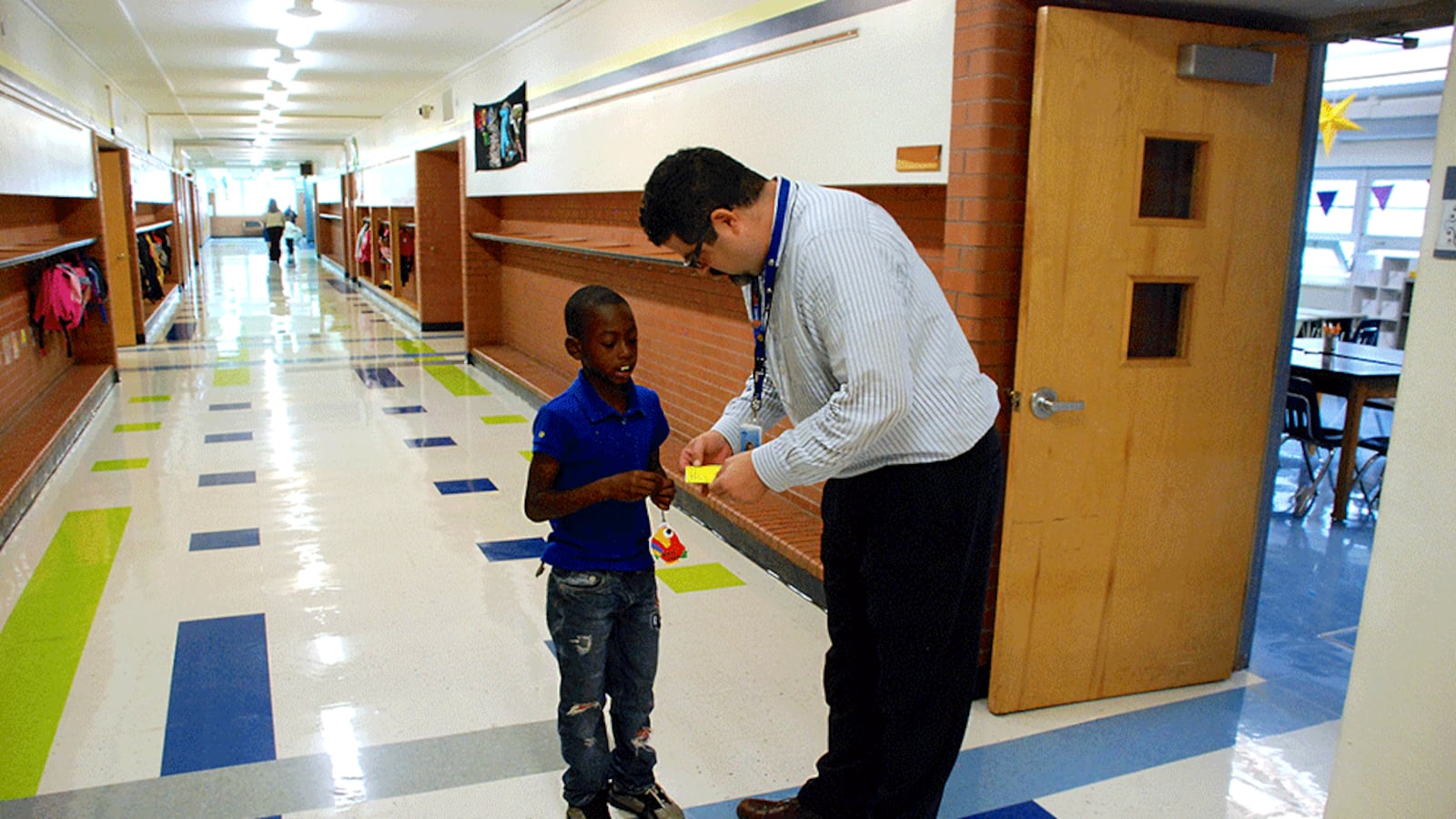When Exaviah Watson was a freshman in high school, her principal was focused on college prep. She took ACT classes and went on college tours and was getting excited about heading to college herself.
But that was four years and three principals ago. When that principal left, after just two years, the college focus “just stopped,” she said.
Exaviah left the school the year after, departing for a different school nearby that has been plagued by similar turnover issues.
Her experience with principal turnover — and the resulting upheaval in her education — is not exceptional in Denver.
A Chalkbeat analysis of state records reveals that although Denver’s overall principal turnover rate has fallen by almost half, turnover has not slowed at nearly a quarter of Denver schools, where three or more principals have come and gone since 2008. That churn is concentrated in schools where the district has pushed its most intense improvement efforts, schools that researchers say are most in need of high quality and steady leadership.
For example, the high-profile improvement efforts that kicked off five years ago in Denver’s far northeast corner have been accompanied by a nearly constant changeover in school leadership. Seven of the eight schools in whose turnaround Denver invested significant resources have seen at least three leaders since the district’s efforts kicked off in 2010.
The fact that those schools are disproportionately attended by underserved students has riled community members, who say their students need a consistent school more than most.
Where do Denver schools see disproportionate principal churn?
At least 34 of Denver’s 185 schools have had three or more principals since 2008. These schools are highlighted with a gold ring on the map below and clustered in the district’s highest need areas. In the Northeast board district, seven of the eight schools targeted for intense improvement and given additional support are among those with high turnover.
The schools on the map are sized by the number of principals they’ve had in the last five years and colored by the percent of students who receive free or reduced lunch. So, larger circles represent schools with higher turnover, and darker circles represent schools with more students receiving subsidized lunch, which is a measurement that districts use for low-income students. But incomplete data from the district means that this map can’t tell the whole story. Hover over the dots below to learn more about each school and comment on this data set to share your story and help us create a more accurate picture of principal churn in the district.
Denver is not alone in its struggle to hold on to school leaders. Nationally, the average tenure for urban principals is shorter than five years.
But interviews with dozens of national figures, local educators, and district administrators suggest that Denver’s difficulties stretch along every step of the leadership process. Principals are thrust into struggling schools with little training, given support that feels more like being watched, and held to expectations that some describe as impossibly high. As schools lose principals to burnout or officials move them out, rocky transitions disrupt students’ classrooms and leave communities feeling isolated from their schools.
District officials acknowledge the challenge. “The notion that great systems can exist without great principals is ridiculous,” said Denver schools leader Tom Boasberg.
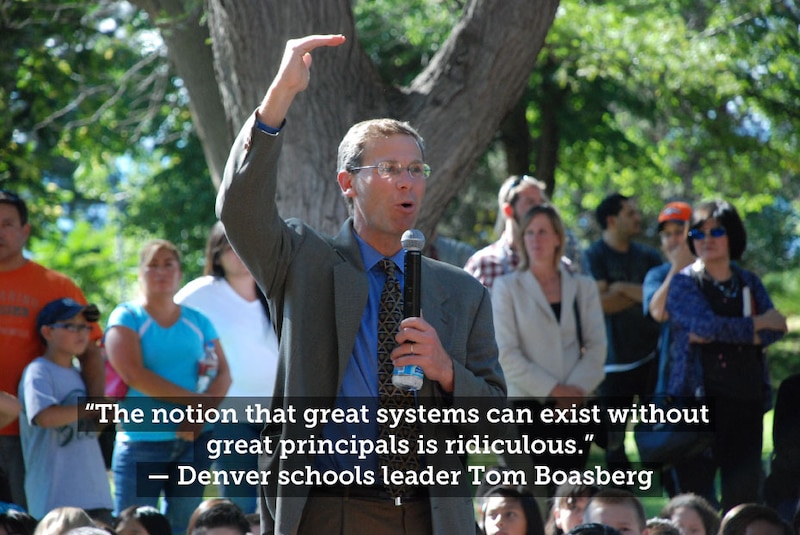
Disrupted schools, disrupted classrooms, disrupted students
Rilla Ervin has seen three principals take over her daughter’s school in four years. And though she understands the rationale behind replacing a principal who isn’t driving improvement in a school, she’s also learned to be wary of the handoff from one principal to another.
“Change can always be good,” said Ervin, whose daughter attends Denver Center for International Studies at Montbello, in the Far Northeast. “It’s the way change happens. When new principals come in, instead of helping them, [the district] says do it your way. Blow it up.”
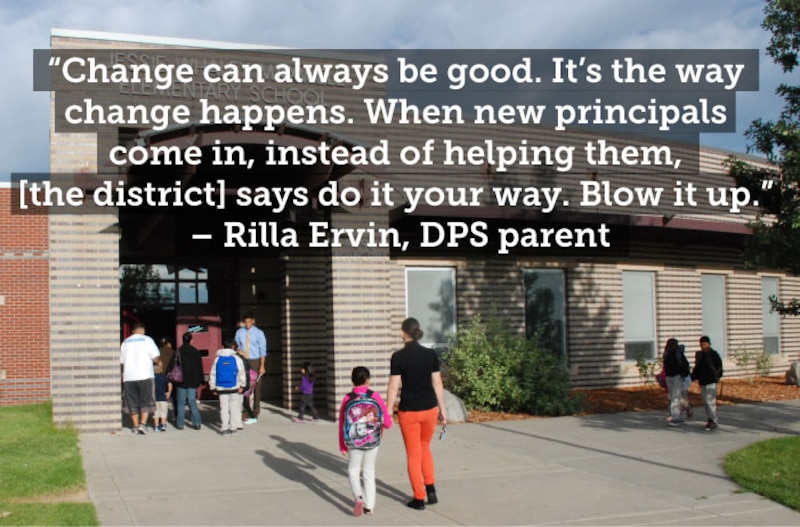
Transitions have not always gone smoothly at DCIS at Montbello. Ervin’s daughter Octavia, who is entering her senior year, said she and other students were buffeted by rapid changes as the school changed hands.
“It messes kids up,” said Octavia Ervin. For example, in the transition from the school’s founding principal to its new leader, the school’s grading system changed. Teachers struggled with the new system and many students ended up with failing grades or say they failed to get the help they needed. Octavia, previously a straight A student, struggled to make the grade in her classes and her mother became frustrated at a lack of information about Octavia’s progress.
That sort of disruption is not unusual as new principals institute systems they feel work best. And the impacts of those changes can be traced straight to students’ scores, for better or for worse.
Estimates of what percent of student test scores can be traced to a principal’s leadership are still fuzzy but likely hover somewhere in the low to mid teens. That effect is less than a classroom teacher. But, said Jason Grissom, who has studied the impact of principals at Vanderbilt University, principals affect many more kids.
And they do much to set the tone of a school and ensure it’s a safe environment for students and teachers to learn and work.
“They’re really the linchpin,” said Christine Campbell, who has studied principal practices in districts around the country.
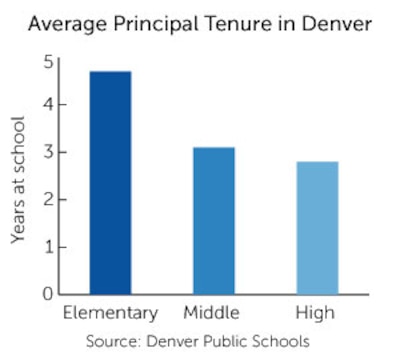
District officials in Denver and around the country recognize the importance of principals and have used the urgent need for strong leadership as the justification for replacing principals after just a year or two, often ushering in big changes to the school.
“The thinking in education seem to be, when you have a leadership change, ‘Out with the old, in with the new,’” said Jane Shirley, who coaches and trains principals in Denver.
But paradoxically, the churn itself could also be interfering with a school’s ability to improve, with constant changes preventing consistent growth.
“Studies suggest student achievement dips following a transition period,” said Grissom. “It recovers after two to three years. But that’s real impact on those kids that are in the school at that time.”
There’s evidence in Denver’s own schools that Grissom’s predictions may be playing out.
For example, after a lackluster first year under new principal Beth Yates, Columbine Elementary School’s students grew by one of the fastest rates in the district on state tests in Yates’ second year. But by the time those scores were reported, the district had already replaced Yates, bringing in the school’s fourth principal in five years.
The change left Melissa Skrbic-Huss, whose son attends the school, with a familiar feeling.
“The inconsistency they have provided to Columbine has made me unhopeful that Denver Public Schools understands what a kid needs,” said Skrbic-Huss. “It made me feel that Columbine is a school where they are trying different techniques to see what works.”
Skrbic-Huss said she worries Denver is willing to experiment at Columbine because almost all students there are poor.
“A lot of times our students come from families where the only consistency is the school,” she said.
So many vacancies, so few principals who are prepared
As a first-year assistant principal at Oakland Elementary, Candice Reese was surprised when a district administrator urged her to accept Denver’s offer that she run her own building.
“I didn’t think I was ready,” Reese said. “Why they put new administrators in [low-performing] buildings, that’s very odd to me.”
The pathway that Reese found odd is actually well worn in Denver. The district must fill between 20 and 30 principal positions (out of 162) each year. And the district must sometimes scramble to find enough candidates with the experience and qualifications to head up schools, especially those that struggle the most.
“There’s no one on the bench,” said Jane Shirley, who coaches and trains principals through an outside program, Catapult (formerly Get Smart Schools).
But the district’s problem, Shirley said, isn’t that it doesn’t have enough people with the capacity to lead schools.
“It’s not that we don’t have the talent,” she said. But many who could or would want to don’t have the necessary training or qualifications.
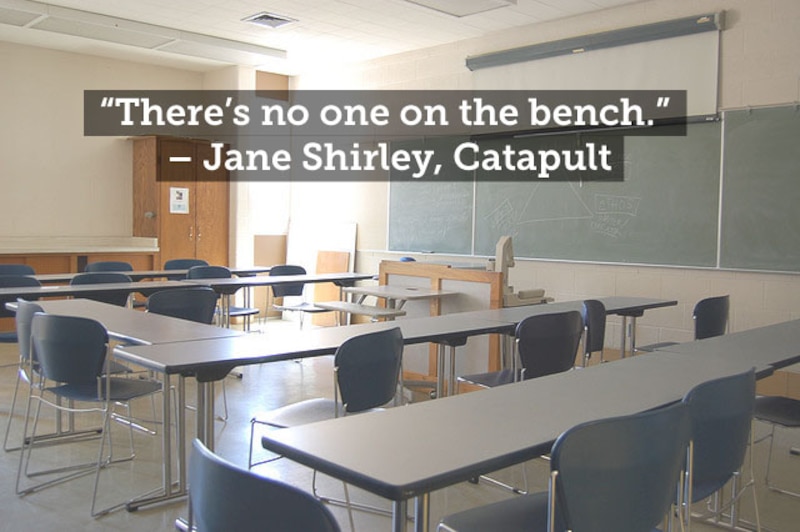
In the past, educators often rose slowly through the ranks at their schools, taking on more responsibility over the course of decades. But the way people think about the work has changed — and so has Denver, with rapid changes to the district disrupting many of its traditional patterns.
“Gone are the days of someone being in a building for 25 years,” said Shirley.
Without enough trained and qualified candidates, the district is sometimes left playing a game of musical chairs, pulling qualified candidates from schools that are thriving to take over at others that are foundering — leaving a leadership void at the schools they vacated.
For example, when the district removed Columbine Elementary School’s principal from her post last year, they pulled in Jason Krause from Smith Renaissance School, where he was in the midst of working to pull up that school’s performance.

The district also relies on veterans to take over struggling schools on a short-term basis to hold the course until a permanent leader can be found, as happened at Manual High School and several schools in the Far Northeast. And the district must still sometimes resort to pulling up an assistant principal like Reese who doesn’t feel ready to take the reins.
The district doesn’t always do a good job of matching schools and principals, said Kim Knous-Dolan, who works for the Donnell-Kay Foundation, a local education research and advocacy organization.
“They could probably get a lot more sophisticated and nuanced around hiring the right kind of leaders for the right kind of schools,” she said. She suggested the district could write and publish profiles for the different kinds of leaders it needs, from someone to run a school for at risk students to a leader of an autonomous innovation school.
District administrators say they have tried to be more thoughtful at making sure the right leader ends up at a school. But they often have a short timeline to find a candidates and do not consistently use tools like observing interactions with staff and community members to determine if a potential principal will be a match.
When it came time to find a new principal at DCIS at Montbello when the school’s founding principal left, parents say they only met a single candidate and did not participate substantially in the hiring process.
The result, Rilla Ervin says, was conflict between the school community and the school’s leader. Octavia Ervin and other students, used to a personable leadership style from founding principal Trent Sharpe, were offended that new leader Suzanne Morey didn’t spend time in the halls or getting to know students.
“She didn’t know your name unless you were in trouble,” said Octavia Ervin. The Ervins described discovering after running into Morey in the school that Morey was unaware Octavia was a student. Octavia Ervin’s younger sister struggled with the lack of guidance. She attended DCIS for middle school but after the disruptions of last year, she moved to another school.
And Morey left at the end of last year for a different principal job she says is a better fit, continuing the pattern of churn at the school.
While district officials would not discuss individual cases, principal and administrator descriptions of the general process of transitioning between leaders suggest that inconsistency is common across the district, with more involved conversations with the staff and community at one school and unilateral decisions at another.
And once the cycle of turnover begins, it can be hard to stop. High quality candidates may be driven away from schools who have a long track record of chewing up and spitting out leaders.
“What’s the inducement to do the job when there’s a line of people who haven’t succeeded?” said Barbara O’Brien, a Denver Public Schools board member who also works at Catapult, a principal coaching and training program.
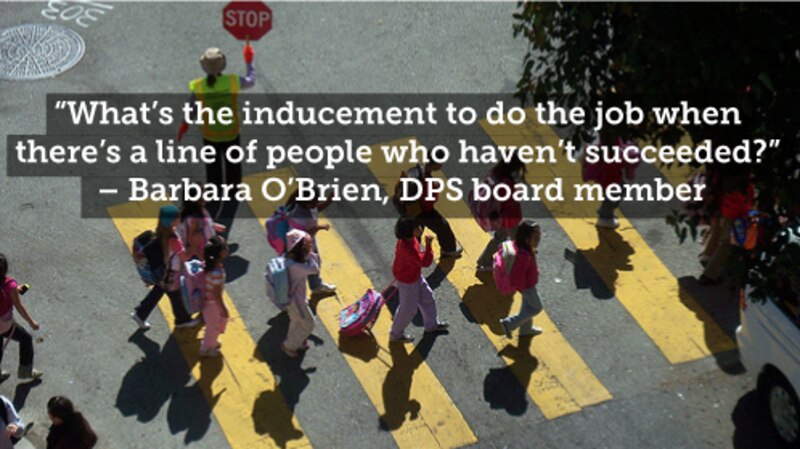
Denver has tried to end the game of musical chairs, building up a base of qualified leaders to take over schools. Like some other cities, it has established its own internal training program, placing principals-in-training in Denver schools as assistant principals while working on getting an alternate principal license.
“We’re able to ensure our candidates are getting the right kind of training and preparation,” said Shannon Hagerman, who runs the training program.
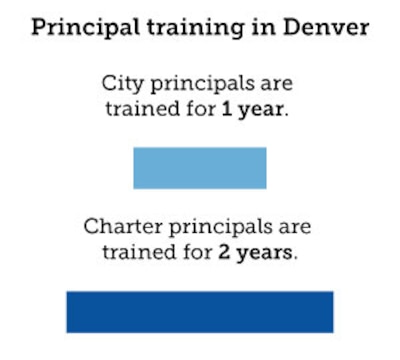
But the city program lasts only a year, a duration that the city’s charter sector recently determined was too short to mint principals ready for the challenges of leading high-need schools. DSST, a high-performing charter network in the city, recently upped its training program from one year to two.
“We do think it takes that amount of time to really prepare our leaders,” said Bill Kurtz, the network’s CEO.
And the program isn’t yet producing enough principals to meet the need. “If you need principals right away, you need lots of strategies,” said Knous-Dolan.
Meanwhile, principals like Reese find themselves stuck in an impossibly hard situation. Reese ended up taking the job but was removed two years later as the district overhauled her new school. She took another principal job in Denver but eventually left the district for Brighton. Now, her old school is on its second principal in three years.
Pressure to make unrealistic gains, with little help
More and more, principals are expected to implement new standards, run new testing systems and improve student scores, all while still addressing the basic needs of keeping a building clean, safe, and orderly.
“The principal is responsible for so much,” said Billy Husher, Jr, a union representative at Denver Classroom Teachers Association.
But the consequences for not successfully navigating the district’s systems are heavy. Principals around the district reported being told they had a two year timeline to dramatically raise students’ test scores — or potentially lose their job.
That timeline appears to have come into play in the decision to replace Yates at Columbine. In a letter home to parents, Yates’ supervisor Erin McMahon told parents that the school had made “modest improvements,” but that “this work must be deepened and accelerated.”
Another principal cited instructions from his supervisors to jump a tier on school rankings within two years, or else.
Current district administrators say no hard and fast timeline for school improvement exists. Still, just one of the schools in the Far Northeast’s turnaround network has had fewer than three principals in five years.
“I wonder if we pull the trigger a little too quickly,” said Shirley.
While there can be good reasons to pull a principal out of a school, districts like Denver often fail to take into account the magnitude of the negative impacts that can result.
“Principal change has a big enough negative impact that districts should think seriously about the costs,” said Grissom. “They’re not thinking about the costs side of it.”
The decision to pull principals after just two years is also part of a misconception about what it takes for a school to make progress and an underestimation of all the elements that must be in line, many observers said.
“They think it’s a magic trick, to bring kids up two or three years to grade level,” said Mary Sam, a former Denver Public Schools teacher who is now a vocal opponent of the district’s reform strategy.
To begin to make a dent in student test scores, principals must do everything from having a healthy school environment to getting the right academic supports in place
“To really change a culture, it takes five to seven years,” said Mel Riddile, the associate director of high school service at the National Association of Secondary School Principals and a former principal himself. “To implement initiatives, it takes two to five years.”
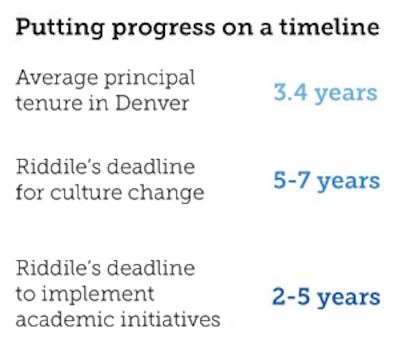
For long-struggling schools, it may be a question of building systems from scratch. Riddile and others estimated that it could take upwards of three years to see a substantial change in test scores. In the meantime, he said, district officials should pay attention to other indicators, including teacher satisfaction and turnover.
In their desperate bid to raise scores faster than some would say is reasonable, district officials also saddle principals of low-performing schools with often competing support systems that leave the school leaders feeling pulled in too many directions.
Most principals juggle the demands of multiple branches of the district bureaucracy. That’s especially true at the district’s turnaround schools, like DCIS at Montbello. Started in 2011 as part of a turnaround program for the entire Far Northeast region, the combined middle school and high school were among the eight schools originally selected to participate in a district experiment in how to run struggling schools. All eight were placed in the Denver Summit School Network, which was supposed to support schools as they implemented a series of district initiatives from longer school days and years to intensive math tutoring.
But the principal of the school was also expected to participate in a multitude of other initiatives, from the network of other DCIS schools to a so-called “data group” for discussing student results. All told, Dan Lutz, the founder of the DCIS network, estimates that a school leader at DCIS at Montbello had to answer to the concerns of as many as five separate organizations.
“It was a mindbender to step into and make sense of,” said Lutz.
Even the district’s systems that are intended to support principals appear to sometimes turn against them. One structure in particular — instructional superintendents — drew harsh critiques. The city’s schools are divided into eleven networks, overseen by teams led by instructional superintendents who are supposed to conduct frequent school visits, provide coaching and help principals coordinate the myriad systems that keep a school up and running.
But even local school board members have questioned how well exactly that structure is supporting school leaders.
“The instructional superintendent should be an advocate for the school,” said O’Brien. “I have a healthy dose of skepticism with how well that layer of the district is working.”
Reese, who helmed a number of struggling schools, described a relationship that was more about catching mistakes than figuring out how to address them.
“In DPS, a lot of the time I felt like it was very punitive,” said Reese. “There’s a fear when district administrators are coming in. Schools that are red [the lowest tier on the district’s ranking system] and schools that are orange [the second lowest tier], there’s an uncomfortable feeling and a feeling like they’re there to get you.”
When the intended support is replaced with accountability, the result, Reese said, can be a sense of steering a sinking ship.
“When you’re doing all that you can, you just feel you’re drowning more and more and there aren’t life preservers being thrown your way,” said Reese.
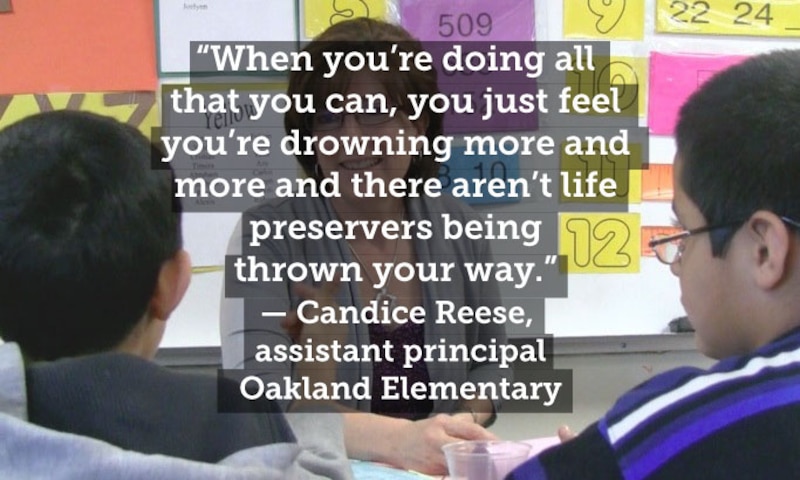
Other principals who spoke to Chalkbeat described more helpful interactions with their supervisors.
Still, the result is often a job that no one wants and no one wants to keep.
“It is a job that is going to burn people out,” said Sonja Semion, the executive director of Stand For Children Colorado, the local branch of a national education advocacy organization. “You have to rely on finding this superhero.”’
Efforts to end churn proceed, but haltingly
District leaders say that they are beginning to take steps to understand Denver’s principal churn in order to figure out what to fix.
“It is concerning,” said Susana Cordova, the district’s chief schools officer. She now oversees school operations and support, the product of a recent shift in how the district manages schools. “It is one of the places we are trying to dig into the root causes.”
The issue may be getting a higher profile within the district, since school board members made leadership one of five key strategies called out in the Denver Plan 2020, which sets out the district’s targets for the next six years.
As a result, Cordova and her staff have spent the fall trying to sort out what is pushing leaders to leave and what schools need from their leaders. The result is at least the beginning of a look at what’s working and what’s not in the district’s efforts to hire and support school leaders.
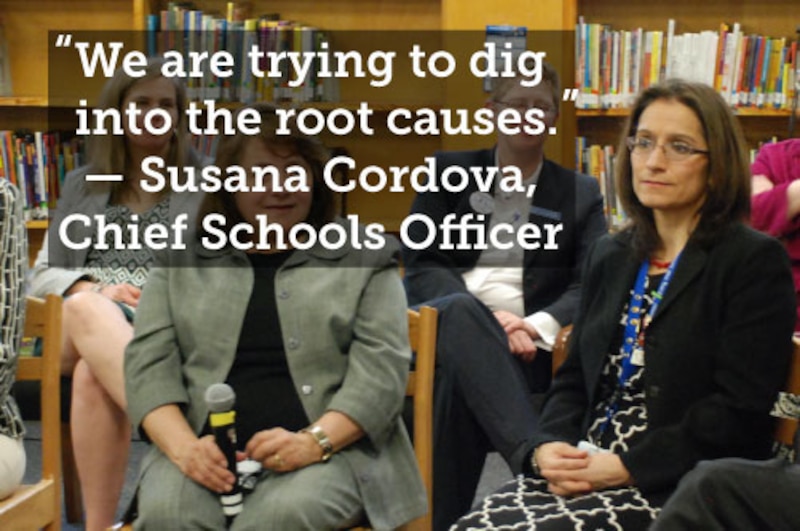
For example, some in the district say structures intended to get principals the help they need are beginning to work.
“I didn’t have coaching when I was a principal,” said Hagerman, who used to be the principal at Montclair Elementary. She now heads the district’s teacher and principal training programs. “The vast majority of principals now have coaches.”
But, Cordova said, the district is still a long way from figuring out how to meet principals’ different needs for support.
“I think we’ve had a lot of effort in differentiation for leaders but I don’t know that we’ve gotten it right,” she said.
And some initiatives, including the training pipeline, could take time to reach their potential.
“It’s going to take a few years before the district’s developmental programs are lining people up with the right fit,” said John Youngquist, Hagerman’s predecessor. He moved to Aurora Public Schools last fall.
The district has also kicked off initiatives intended to lighten principals’ loads, from training teachers to take on more responsibilities to dividing up a single principal position into several.
The goal, Cordova said, is narrowing principals’ sphere of focus to instruction and school climate and “then pushing everything out the principal’s way to be able to do that.”
At DCIS at Montbello, the single principal position for the 6-12th grade school has now been split in two: one leader for the middle school and one for the high school. And the school’s former leader, Suzanne Morey, is now splitting the principal role at a nearby school with another veteran principal. One oversees instruction, the other operations.
“The role of the principal is changing,” said O’Brien. “The idea of a knight in shining armor just doesn’t work anymore.”
There are signs on the ground, beginning last spring, that schools may be having more luck finding and keeping principals.
At DCIS at Montbello, whose last principal stayed only a year, parents and district administrators say that the transition to a new pair of principals has been largely smooth for the school.
“This year, we were very apprehensive,” said Eurzila Lowe, whose daughter attends the school. In spite of that, she said parents and students “have all committed to supporting this new principal.”
The founder of the local network of international schools to which DCIS belongs said that this transition, which is the second since the school opened in 2011, has been the smoothest to date.
“It was the best ever,” said Lutz. “The district has learned a lot about school leaders.”
But the success of those efforts remain patchy and inconsistent across the district, a fact that district leaders acknowledge.
“Human beings are complicated,” said Boasberg, the district’s superintendent. “Sometimes the reason it works in school A and not in school B is the people doing it.”
And there are some signs that turnover will continue at some long-time hotspots. At George Washington High School, where a series of high-profile fights over the school’s exclusive IB program have soured relations between the district and parents, yet another principal left after just two years in the chair. District officials announced that they are launching a search for a new leader at Manual High School, to oversee the school’s next overhaul and Valverde’s leader has already promised to leave at the end of the year, over her school’s performance on state tests.
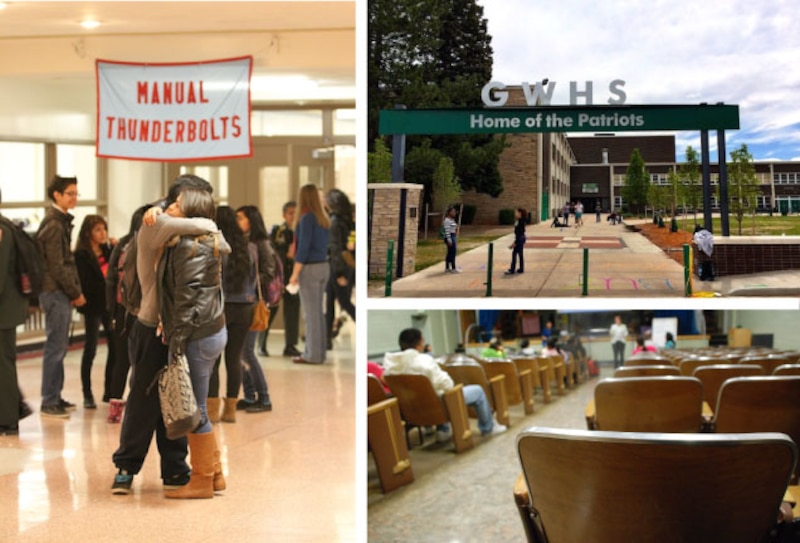
The problem, according to at least one observer, is that the district’s disjointed efforts haven’t materialized into a comprehensive strategy.
“They’re doing something,” said Knous-Dolan, a local education researcher and advocate. “It’s just not a full blown and thoughtful solution.”
Until district officials acknowledge the scale of the problem, she said, nothing is going to change for good.
“If they made it a priority, it could change,” she said. “Someone just has to have the will to do it.”
Data visualizations by Sarah Glen. Reporting contributed by Monique Collins.

